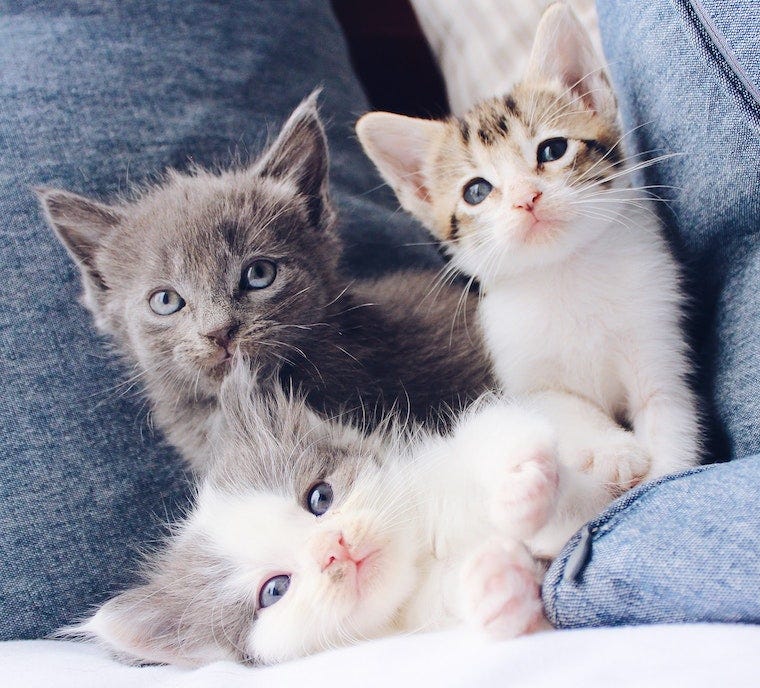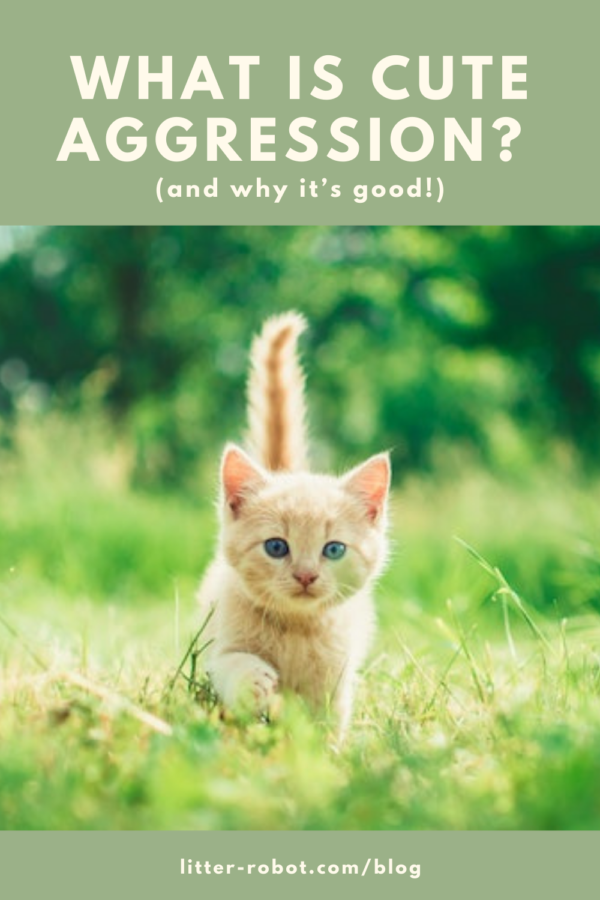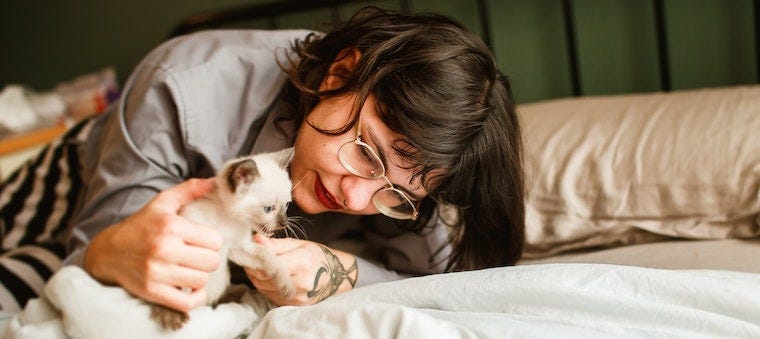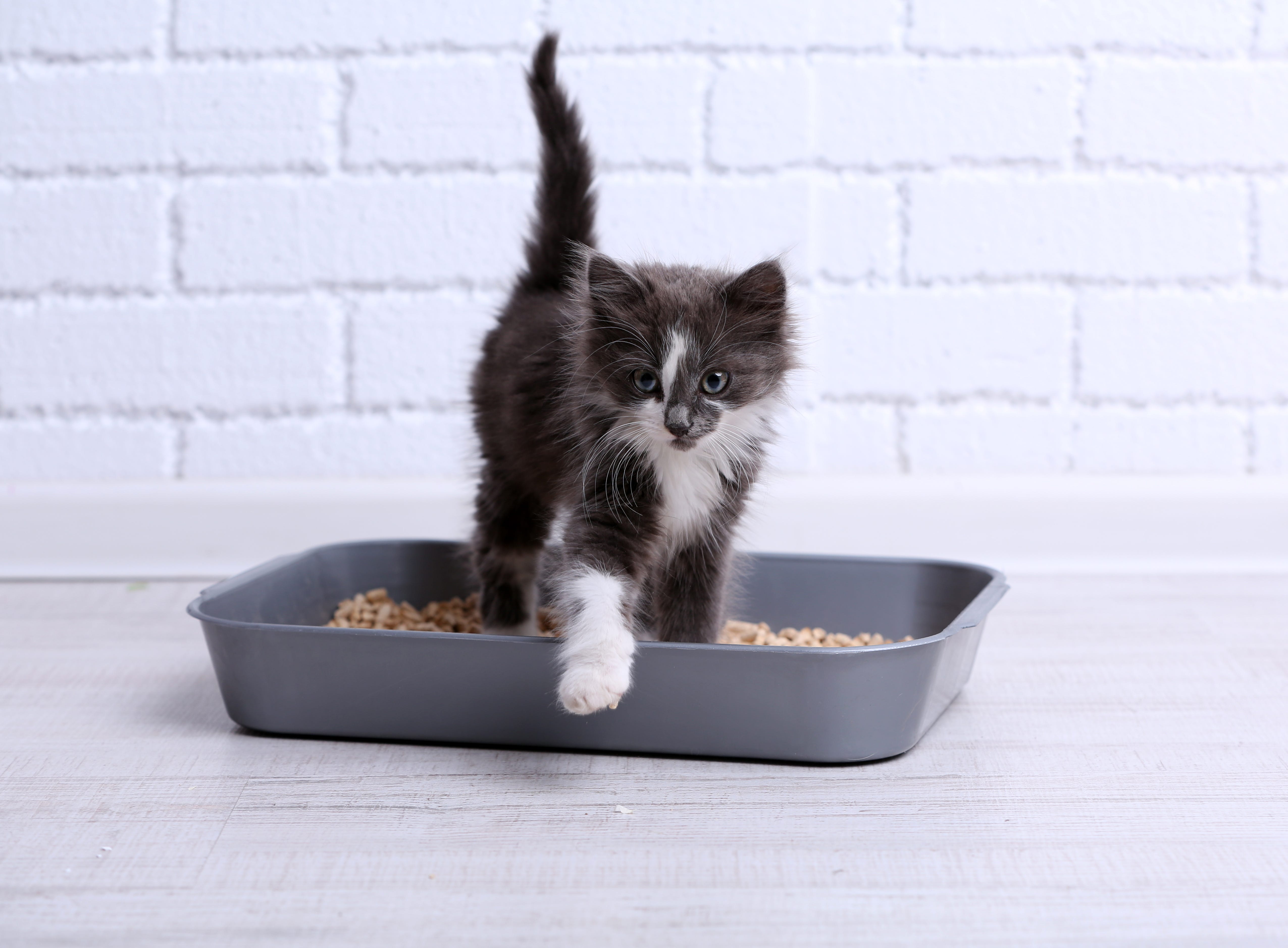Cute aggression. This seemingly contrary term has gained attention in the last few years with the rise of social media—namely, the endless access to photos and videos of kittens, babies, and other adorable things. Cute aggression, it turns out, is not something you should fear to feel. Find out why below!

So, what is cute aggression?
Have you ever found your cat loafing contentedly on the couch and simply had to smother her with kisses, practically crushing her in the process? Or passed a baby in a stroller and could barely restrain yourself from pinching his chubby cheeks? Or even watched a video of cuddly puppies and shrieked out loud, “So cute I could eat them!”
That, friends, is cute aggression.

Behavioral findings
Cute aggression was first identified in a 2015 Yale University behavioral study—only it was referred to as dimorphous expressions of positive emotion. Several years later, the journal Frontiers in Behavioral Neuroscience published findings on “cute aggression,” defined as “the urge to squeeze, crush, or bite cute things, albeit without any desire to cause harm.”
Cute aggression appears to be an involuntary response to being overwhelmed by a positive emotion.
In the 2018 study, researchers recorded the electrical activity in the brains of 54 young adults as they looked at images of animals (babies and adults) and human babies with varying levels of cuteness. After each set of images, participants filled out a survey regarding their feelings of caretaking and more. The results found that “cute aggression” flared up specifically when the brain’s reward center was overwhelmed following images that featured traits humans associate with cuteness—think babies and puppies with big eyes and full cheeks.
The (odd) signs of cute aggression
If you’ve ever seen something so cute that you could just burst, you may have also noticed these accompanying symptoms:
- Clenched jaw
- Gritted teeth
- Clenched fists
- Pinching
- Squeezing
These symptoms may seem baffling and even alarming. However, the important thing to remember is that you don’t actually have a desire to harm the cute thing. So, why feel this way at all? Keep reading to find out!

Why it’s okay to be a cute aggressor
Scientists suspect that the overwhelming feelings associated with cute aggression serve an important purpose. Essentially, these “negative” aggressive thoughts demand something of us: They remind us that no matter how dang adorable babies, puppies, and kittens are, we can’t afford to be hypnotized by their cuteness for very long. That’s because babies (and orphaned baby animals) depend on us for caretaking.
Lead researcher and professor at the University of California Katherine Stavropoulos explains, “A baby can’t survive alone, but if you’re so overwhelmed by how cute it is and how much you love it, then you can’t take care of it, and that baby won’t survive.”
The study reinforces this idea in that the surveys filled out by participants showed that an aggressive reaction was also “heavily linked to feeling a caretaking urge toward a cute thing.”
Case in point: Taking care of kittens
If kittens are a prime cause for your cute aggression, it stands to reason that you feel a strong urge to care for them. Whether you find a stray kitten outside or are actively interested in becoming a foster parent, let’s cover a few tips for caring for kittens now!
- If you have a sick or injured kitten in need of immediate care, take them right away to the nearest emergency veterinarian.
- At home, provide a kitten-proof area that is quarantined off from other animals. This area should have a heating pad set on low, with a soft blanket covering it completely. Also provide a soft blanket for them to lay on that is not directly on the heating pad. (That way they have the option of moving away from the heat source.)
- If the kittens seem in stable condition, get them on a regular feeding schedule. Kittens 0-4 weeks with no mom will need to be bottle fed using a kitten formula (never give cow’s milk to a kitten—this is very dangerous!). At 4-5 weeks, they can eat a combination of formula and wet kitten food. Kittens 5-6 weeks+ can generally eat wet kitten food.
- Kittens below 3 weeks need help with urinating and defecating. After every feeding, use a damp, slightly rough terrycloth washcloth to stimulate the anus and urinary openings.
- Kittens above 3 weeks should be immediately placed into the litter box, so that they learn right away where to use the bathroom. (Use a non-clumping litter when working with young kittens. It is safer for them in case of accidental ingestion.)
- Once kittens reach 6 weeks of age, they should begin the standard series of vaccines and other necessary testing and treatments, such as deworming.
- At 2 months and 2 pounds, kittens should be spayed or neutered.
It takes a village
Still think it’s odd that you feel cute aggression towards a random baby, kitten, or other vulnerable creature? You shouldn’t. The researchers noted that the feeling is an evolutionary response to caretaking. For many generations, caretaking of babies didn’t just fall on the mother and father—it happened within large groups, often in multigenerational and social settings.
So the next time someone says you’re weird for showing signs of cute aggression, you can tell them that you’re really just an evolved, exceptional caretaker!
Sources:
- Frontiers in Behavioral Neuroscience
- Yale University research article
- The Atlantic
- NPR
- Hannah Shaw (Kitten Lady)
Cover photo by Helena Lopes on Unsplash





